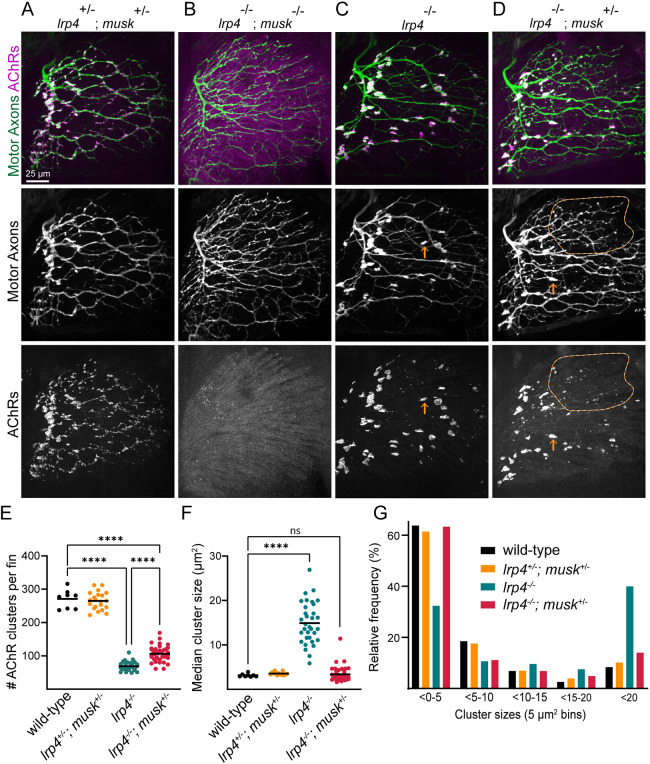Fig. 7
Musk depletion partially suppresses lrp4-mutant phenotype. (A,B) lrp4+/−;musk+/− trans heterozygotes have an innervation pattern indistinguishable from WT (A), whereas lrp4;musk double mutants phenocopy musk mutants with defasciculated axonal patterning labeled with Tg(mnx1:GFP) and diffuse AChR staining labeled by α-Btx (B). (C) lrp4-mutant motor axons have swellings in their innervation pattern that are opposed to large AChR clusters. (D) Although lrp4 mutants that are heterozygous for musk (lrp4−/−;musk+/−) still have some large AChR clusters similar to lrp4 mutants (orange arrows), they also have regions of the fin with smaller AChR clusters (encircled by orange line). (E-G) Quantification of the number of AChR clusters per fin (E), the median cluster size per fin (F) and the distribution of cluster sizes (5 μm2 bins) (G). ****P<0.001, one-way ANOVA with Sidak's (E) or Dunnett's (F) multiple comparisons test. n=8 (WT), 21 (lrp4+/−;musk+/−), 4 (lrp4−/−;musk−/−), 33 (lrp4−/−) and 39 (lrp4−/−;musk+/−).

